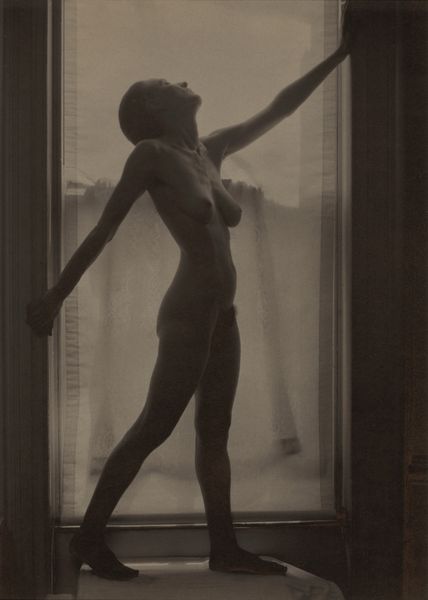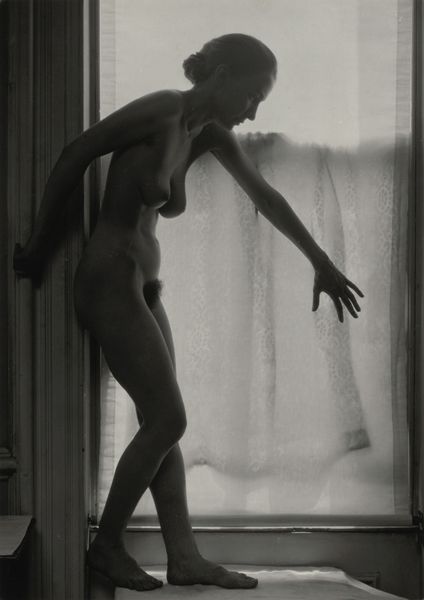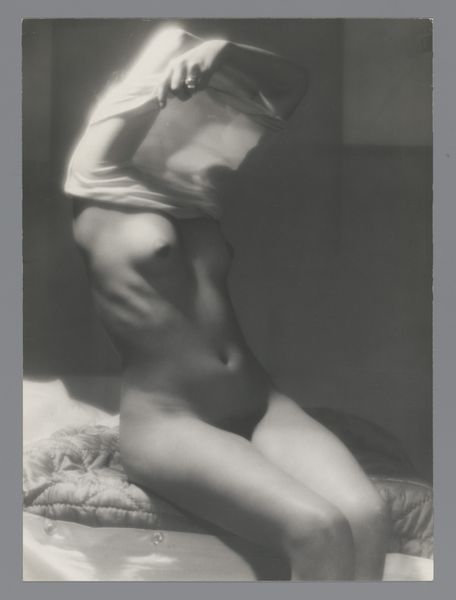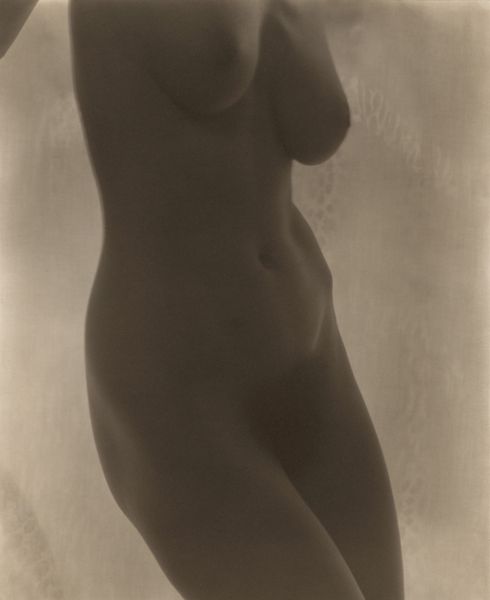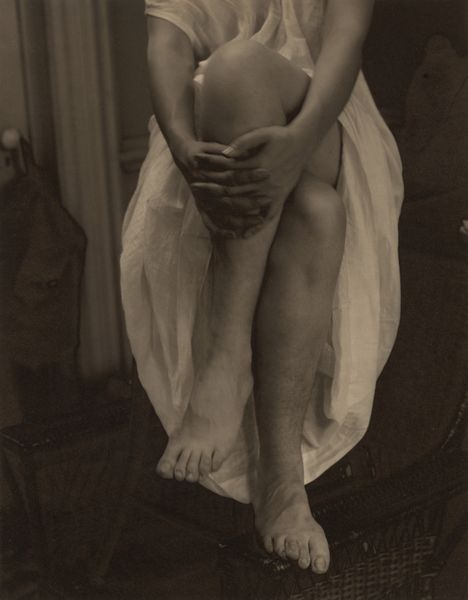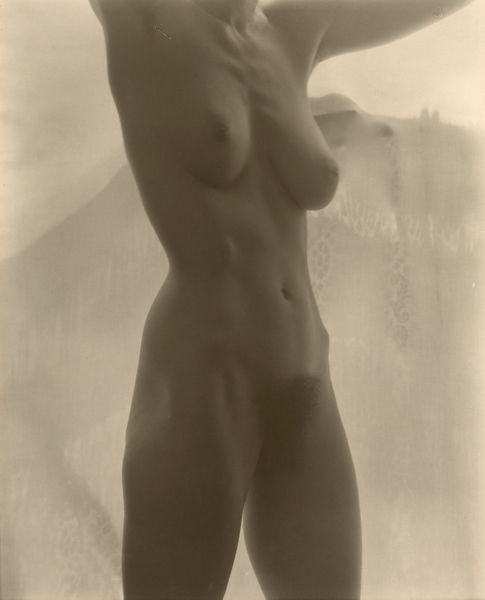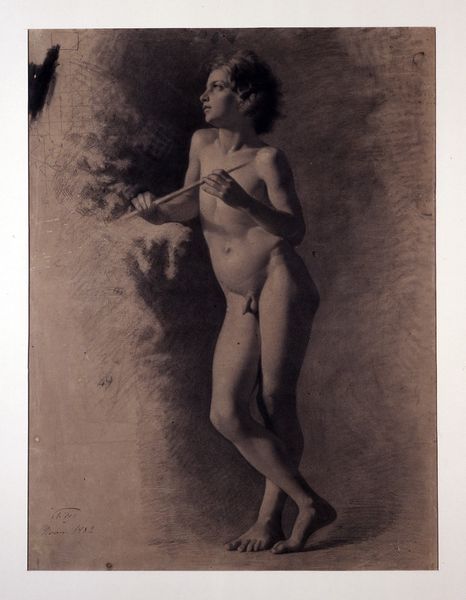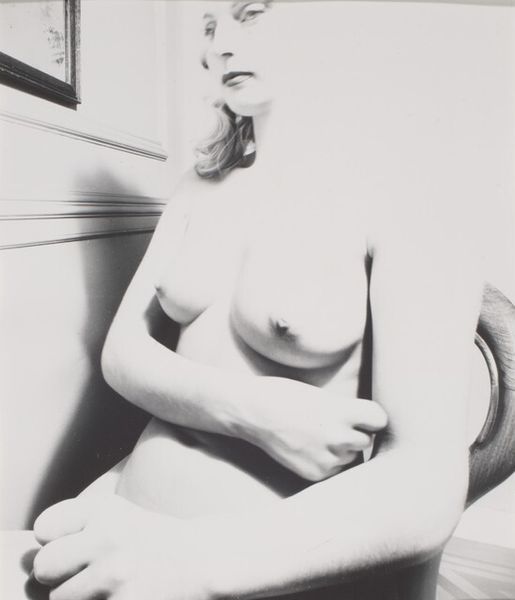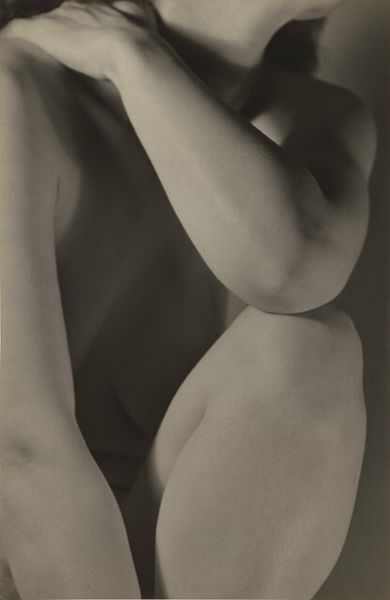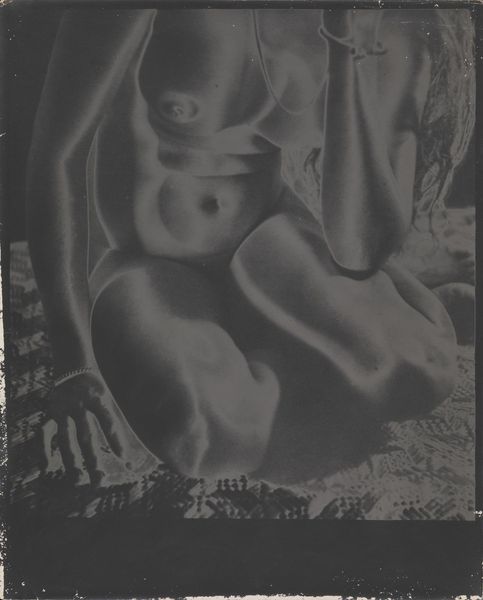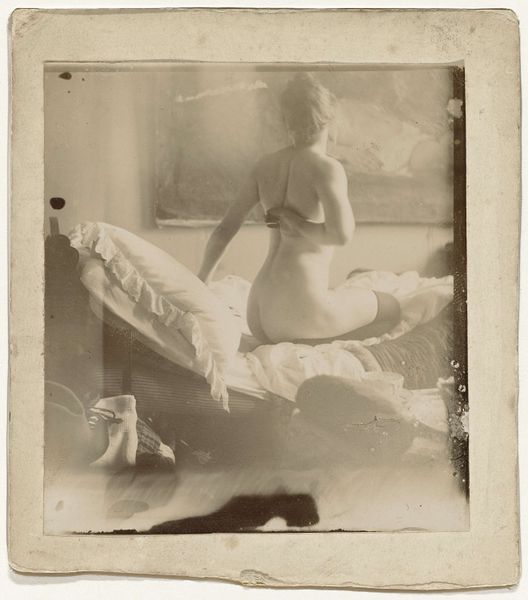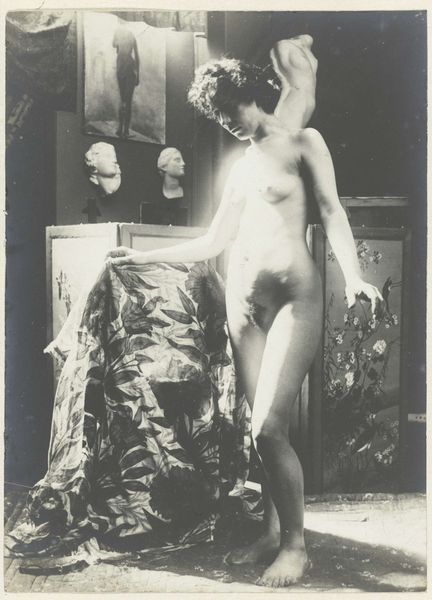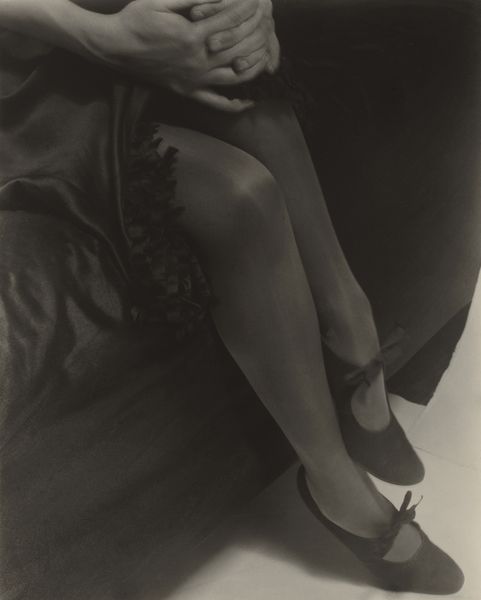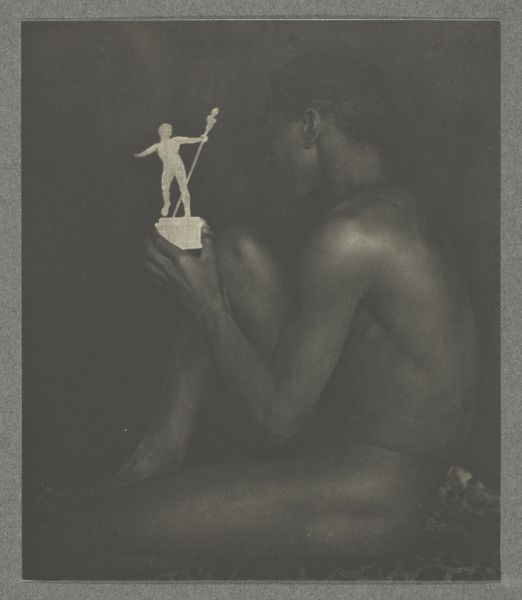
photography
#
portrait
#
17_20th-century
#
art-nouveau
#
pictorialism
#
archive photography
#
photography
#
old-timey
#
monochrome photography
#
19th century
#
nude
#
monochrome
#
exhibition
Dimensions: sheet (trimmed to image): 22.9 × 15.3 cm (9 × 6 in.)
Copyright: National Gallery of Art: CC0 1.0
Editor: So, this is a photograph entitled *Georgia O'Keeffe,* created in 1918 by Alfred Stieglitz. It's a gelatin silver print. What strikes me immediately is how soft and dreamlike it feels, even though it’s a nude portrait. What do you see in this piece, looking at it formally? Curator: Indeed. Focusing solely on its formal properties, the interplay of light and shadow is quite remarkable. Notice how Stieglitz uses a very limited tonal range, predominantly greys and creams. This restricts visual contrasts. Instead, the forms blend smoothly, creating subtle delineations of the body’s contours and the surrounding textiles. How does the composition strike you? Editor: Well, I notice the strong diagonal created by her body leaning against the window frame. And the placement is off-center, making it more dynamic than if she were right in the middle. Curator: Precisely. Stieglitz deliberately avoided symmetry, opting instead for asymmetry that enhances the dynamism and visual interest. The off-kilter placement intensifies a sense of immediacy and a lack of staged perfection. Further, note how the lines and forms interact. Do the draping folds of the kimono seem arbitrary, or are they contributing to the whole composition? Editor: I see what you mean. The fabric, with its soft patterns, kind of echoes the body's curves, leading your eye around the whole image. So, the forms create the feeling of unified composition. Curator: Yes, a dialogue unfolds. There are few sharp edges; soft tonality prevails. The success hinges on balancing a compelling form with tonal variations to avoid monotony. Ultimately, one sees the structure inherent in Stieglitz's method, which brings out an expressive articulation and harmony. Editor: I never would have noticed so many of those details. It's a great example of how carefully observing formal elements can really enhance understanding and appreciation. Curator: Exactly. Attending to an artwork’s formal qualities first provides the grounds for a deep interpretation and appreciation, independent of external information. It also serves to avoid overly hasty cultural assessments.
Comments
No comments
Be the first to comment and join the conversation on the ultimate creative platform.
